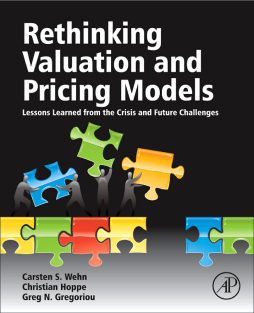
BOOK
Rethinking Valuation and Pricing Models
Carsten Wehn | Christian Hoppe | Greg N. Gregoriou
(2012)
Additional Information
Book Details
Abstract
It is widely acknowledged that many financial modelling techniques failed during the financial crisis, and in our post-crisis environment many techniques are being reconsidered. This single volume provides a guide to lessons learned for practitioners and a reference for academics. Including reviews of traditional approaches, real examples, and case studies, contributors consider portfolio theory; methods for valuing equities and equity derivatives, interest rate derivatives, and hybrid products; and techniques for calculating risks and implementing investment strategies. Describing new approaches without losing sight of their classical antecedents, this collection of original articles presents a timely perspective on our post-crisis paradigm.
- Highlights pre-crisis best classical practices, identifies post-crisis key issues, and examines emerging approaches to solving those issues
- Singles out key factors one must consider when valuing or calculating risks in the post-crisis environment
- Presents material in a homogenous, practical, clear, and not overly technical manner
"This book shows in a comprehensive way the influences and impacts of past crises. After guiding the reader through several investment styles and asset classes, the editors can present a deep comparison of governmental regulation on the one side and markets' tendencies toward self-regulation on the other. Their analytics identify leading indicators of future crises. A must-read for every financial market participant."
--Christoph D. Kauter, Trigon Equity Partners
"In both our personal and professional lives, crises stimulate serious soul searching. The Global Financial Crisis was bound to have this effect on financial risk management. Rethinking Valuation and Pricing Models: Lessons Learned from the Crisis represents a major contribution to the collective soul searching currently under way in the world of quantitative finance. Particular attention is paid to the need for improved treatment of "higher order risks" such as basis risk, counterparty default risk, the instability of implied correlations and the shifting credit quality inherent in many interest rate indices. Also addressed is the realization that some risks are different in kind from those reflected in daily fluctuations of prices and rates (essentially the difference between risk and uncertainty in the Frank Knight sense). While not a volume for the quantitatively faint of heart, this book represents a significant contribution to the continuing reassessment of what we know about risk and how to quantify it."
--David M. Rowe, President of David M. Rowe Risk Advisory
